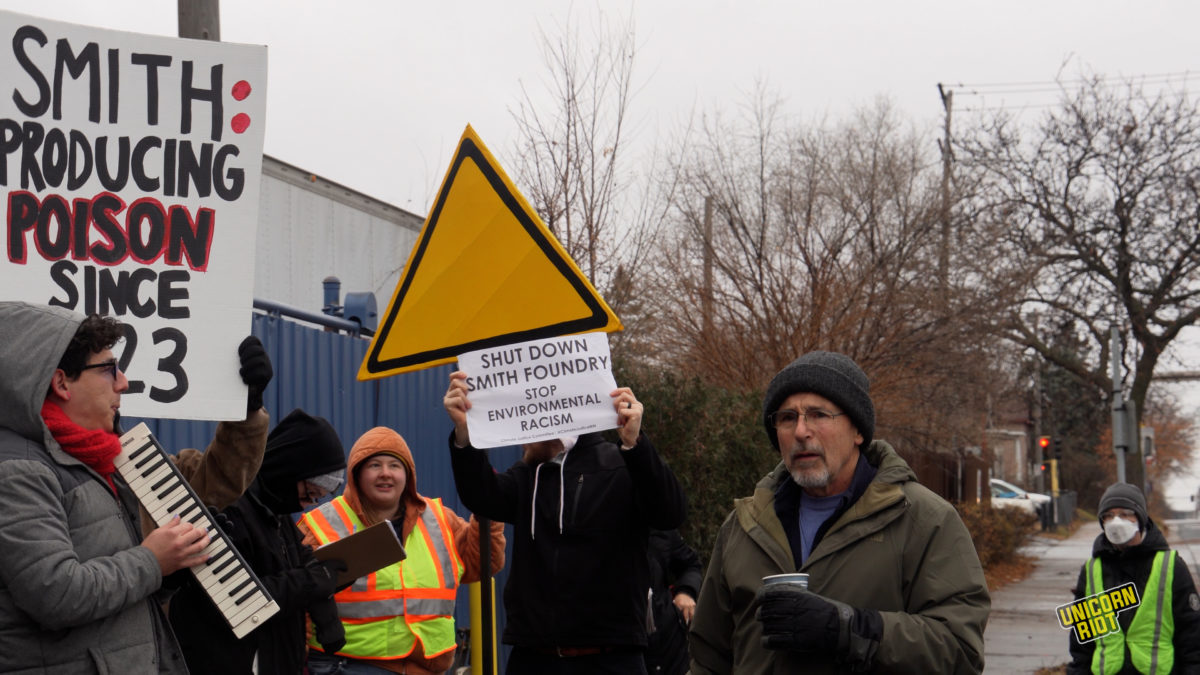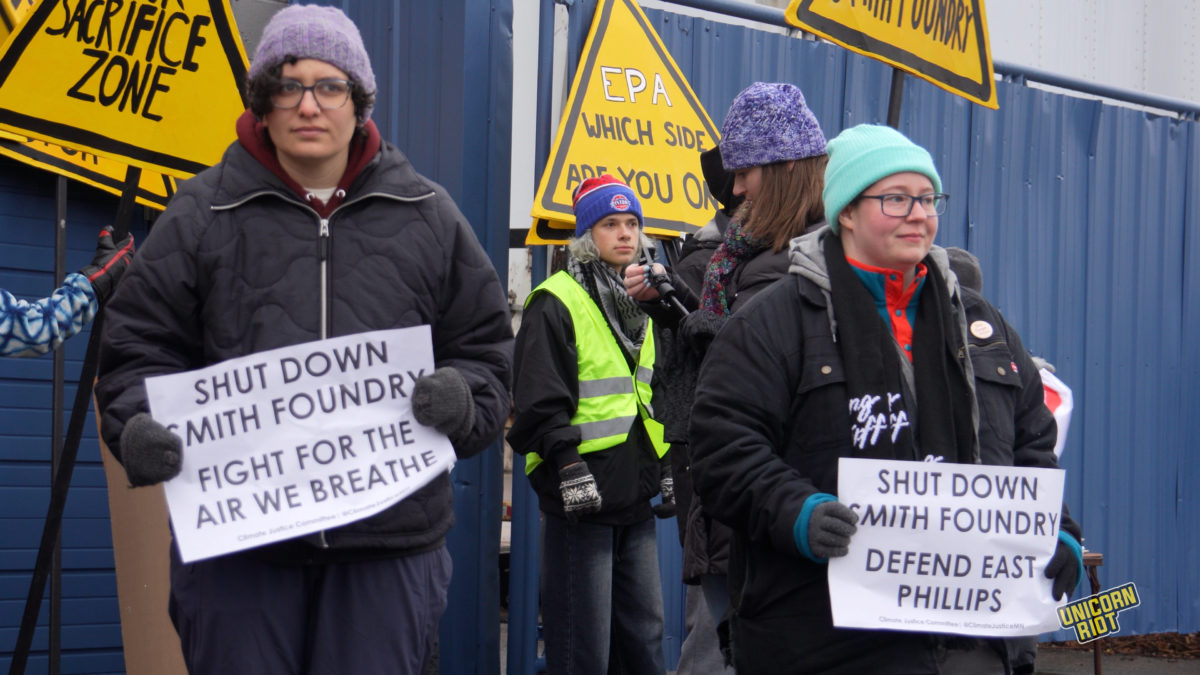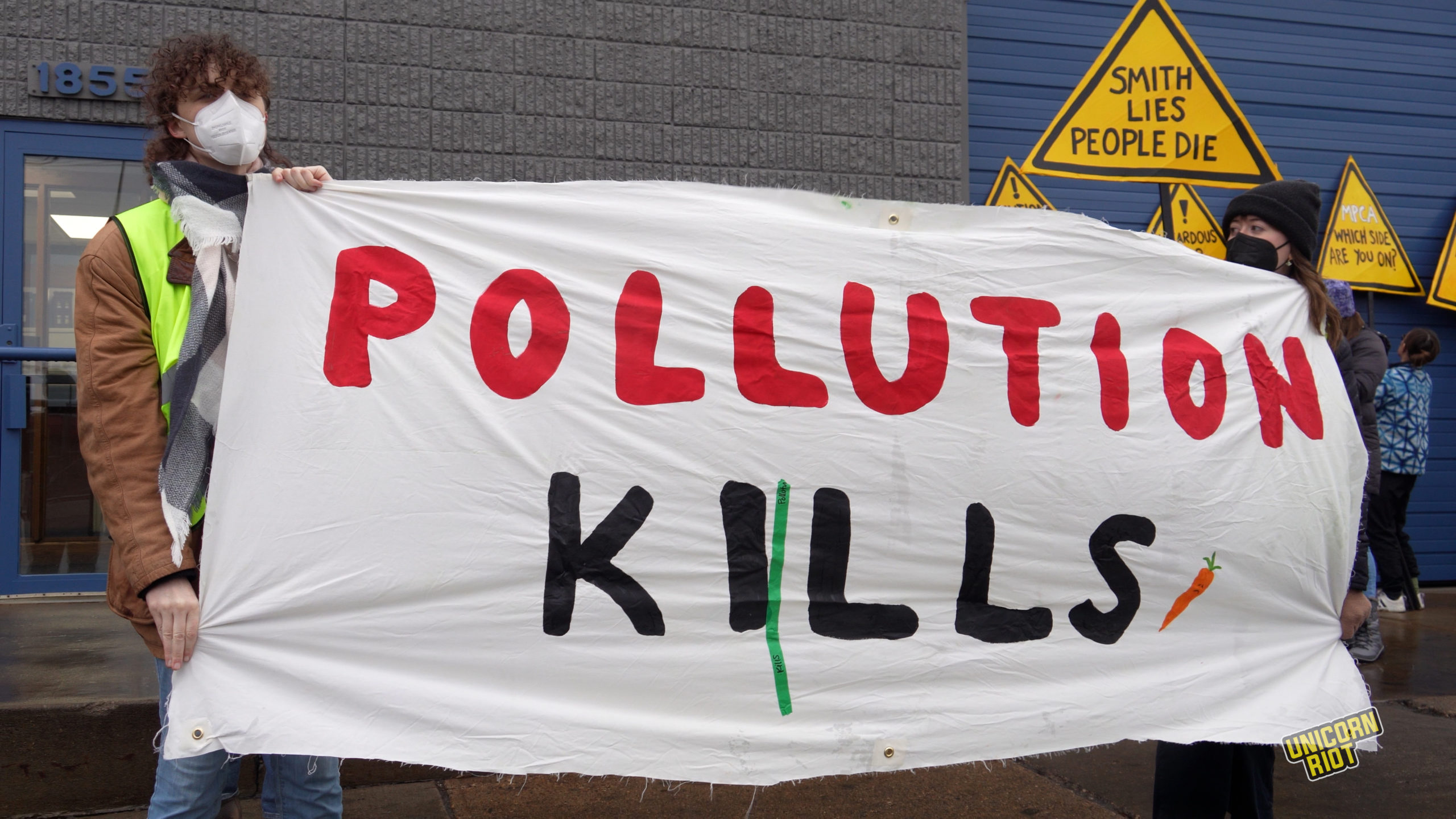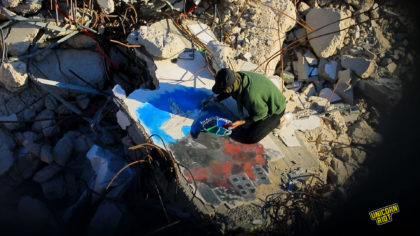Protests Against Smith Foundry, Ex-EPA Scientist Calls Pollution Regulations a ‘Smokescreen’
Minneapolis, MN — On January 11, 2024, community members gathered to discuss the future of the Smith Foundry in Minneapolis’ East Phillips neighborhood. The iron-casting facility has been found to violate health regulations, thereby likely threatening the well-being of people living nearby. In November, residents had called for the closure of the foundry after discovering records from the Environmental Protection Agency (EPA) indicating that the company had been exceeding Minnesota emission limits of particulate matter since 2018 — without notifying the state.
Despite the Minnesota Pollution Control Agency (MPCA) pledging to meet regularly with the community, MPCA authorities were absent from the meeting, citing a “conflict of interest” and a lack of staff. But organizers say this contradicts the MPCA’s public comments.
Minneapolis City Councilor Jason Chavez was at the meeting and expressed a personal belief that the Smith Foundry should no longer operate in the city due to its impact on the neighborhood. On December 20, 2023 Chavez released a statement calling for the closure of Smith Foundry.
As previously reported, EPA documents revealed elevated levels of airborne particulate matter around the foundry in pollution monitoring conducted by the MPCA. Cracks and holes in the foundry’s ductwork were discovered, and air emissions reports from 2018 to 2022 showed violations of state regulations.
On December 9, 2023, residents and environmental advocates rallied outside Smith Foundry in response to an EPA inspection back in May. The inspection exposed the facility releasing lead and fine particulate matter at twice the legal limit, raising concerns about health impacts.
Nazir Khan, co-director of the Minnesota Environmental Justice Table, expressed concerns about permits and emissions from Smith Foundry. He questioned how permits are designed and highlighted the discrepancy between permitted levels and actual emissions.
Doug Gurian-Sherman, a former EPA risk assessor and scientist, raised doubts about the effectiveness of permits, calling them a “smokescreen” and suggesting that regulatory agencies are compromised and influenced by the industries they regulate. He said, “these agencies are often bought out by the industries they regulate.”
“I can tell you when I was with EPA our administrator used to meet with the regulated industries almost every day, they used to take them out to lunch.”
Former EPA scientist Doug Gurian-Sherman


Residents of East Phillips, including the Indigenous community of Little Earth, face higher rates of asthma than anywhere else in the state, according to the Minnesota Department of Health. Advocates argue that the foundry’s continued operation in this majority BIPOC (Black & Indigenous People of Color), working-class neighborhood is an example of environmental racism.
CJ McCormick, an organizer with the Climate Justice Committee, emphasized the disparity in environmental considerations, stating that wealthy, white neighborhoods would not tolerate a facility like Smith Foundry near their homes or schools.

A letter by the MPCA was sent to Smith Foundry on December 20, 2023 which requested they develop a plan to test, monitor, and report its’ air emissions. In response to the letter, the current Smith Foundry president said:
“With respect to MPCA’s requests related to lead, we would like to note that, for unknown reasons, the previous owner of our facility appears to have used the maximum allowable lead emissions under EPA guidelines for reporting his company’s lead emissions. We strongly believe that these reported emissions are not reflective of the actual emissions from Smith Foundry.”
The EPA is taking legal action against Smith Foundry, with potential outcomes including cash settlements, consent decrees, fines, and environmental projects for public health benefits.
The ‘cumulative impacts’ law, enacted in Minnesota in 2008, mandates or requires additional studies known as cumulative levels and effects (CL&E) analyses. These studies are a prerequisite for new or reissued air permits within South Minneapolis.
This law aims to assess the combined impact of multiple sources of pollution, providing a comprehensive understanding of environmental effects before approving permits in the specified region.
Regulated by the MPCA, the foundry is one of 123 facilities subject to the new cumulative impact law aimed at tighter regulation of polluters in environmental justice neighborhoods. Smith Foundry has a pending permit application with the state, seeking approval to continue operations. The MPCA awaits additional emission reduction plans, expected early this year, before making a decision on the permit.
There will be a community forum on “Smith Foundry and Public Health in Phillips” on Wednesday, January 31 organized by Chavez discussing “ways to address pollution concerns in your area.”
Smith Foundry sits across the street from the Roof Depot site, a contested swath of polluted land in the arsenic triangle that was recently bought by the East Phillips Neighborhood Institute after a decades-long battle to prevent the city from demolishing the site and causing more pollution.
Please consider a tax-deductible donation to help sustain our horizontally-organized, non-profit media organization:

Follow us on X (aka Twitter), Facebook, YouTube, Vimeo, Instagram, Mastodon, Threads, BlueSky and Patreon.


